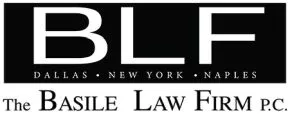Now that the SEC has started prosecuting toxic convertible note lenders for violation of the Securities and Exchange Act of 1934 for engaging in the business of buying and selling securities without first being registered as is required by the Securities Act, Chapter 7 Trustees may have a new way to recoup tens of millions of dollars of "fraudulent Conveyances" under the Bankruptcy Code and state law. In many Bankruptcy cases, "avoidance actions" represent the only assets available to pay unsecured creditors. A post-confirmation trustee, a Chapter 11 trustee, or a Debtor in Possession usually brings an avoidance action. When this occurs, preferential payments and fraudulent transfers made by or from the debtor are placed into the estate for a pro-rata distribution to creditors. Recovery actions by the bankruptcy trustee are not limited to Ponzi schemes or situations involving financial improprieties, much like activities surrounding the Bernie Madoff case in New York. These transfer recoveries are at the foundational roots of Chapter 11 reorganizations and Chapter 7 liquidations. Federal Courts, in the last year, have agreed with the SEC that engaging in the business of buying convertible notes (a form of security), then converting those securities into stock then immediately selling that stock into the market is behavior of a dealer, requiring registration. The Securities Act VOIDS those transactions by statute, not by some articulate misdirection name calling by #biglaw firms. (See Section 29(b) ; 15 US Code §78cc).
Creditors are familiar with the attempts by bankruptcy trustees to recover debt or loan repayments made within 90 days prior to a debtor filing a bankruptcy proceeding. The bankruptcy trustee attempts to recover these payments by deeming them preferential under bankruptcy law. The bankruptcy code also authorizes bankruptcy trustees to recover conveyances that are deemed to be "fraudulent transfers" that have been made within two years prior to the debtor filing a bankruptcy proceeding. The two-year look back period could be extended to four years (under state law) prior to the bankruptcy filing. The fraudulent transfer statutes in the Bankruptcy Code are virtually identical to every state statute that have enacted, or adopted what is known as the Uniform Fraudulent Transfer Act (UFTA). New York has recently adopted this as well.
The Fraudulent Transfer Act provides that, in addition to actual fraud, a bankruptcy trustee or a Debtor in Possession can seek a recovery if constructive fraud is present. Constructive fraud occurs under bankruptcy law when the debtor entity "received less than a reasonable equivalent value in exchange for" a transfer (such as stock) and where the business that became the bankruptcy debtor "was engaged in business . or was about to engage in business . for which any property remaining with the debtor was an unreasonably small capital." This is actually the effect of most toxic convertible notes because the toxic lender receives stock with a value of more than 54% of the amount of debt that is being converted, especially from OTC Markets issuers (small public companies). We believe that the illegal contract, void at its inception under the Securities Act creates the basis to recoup ALL value of all stock transferred to the lender within 4 years. We believe both, actual fraud and constructive fraud apply here.
The constructive fraud aspect of the fraudulent transfer language in the Bankruptcy Code has rarely been used with the exception in leveraged buyout situations where the courts have ordered return of payments in connection with LBO transactions. Notwithstanding the use in LBO transactions, an analysis of case law reveals that the same fraudulent transfer provisions of the Bankruptcy Code may be utilized by the bankruptcy trustee (or a Debtor in Possession in a Chapter 11 case) to recover payments to unsecured creditors (toxic convertible note lenders) as a result of stock being used to repay for existing debts.
In a stock for debt conversion situation, the corporate entity is forced to issue its shares of stock to a creditor at steep contracted rate discounts. The payment received by the company for the stock in a convertible note transaction is usually by contract, greater than 30% of lesser value than the market value of the stock at the time of the transfer (54% more in stock than the debt being converted). Hence, under similar circumstances, courts have held that stock repayments on a prior debt may not constitute a reasonably equivalent value that triggers a fraudulent transfer action.
In 2016, the US Court of Appeals for the Second Circuit held In re Adelphia Communications Corp. that while the fraudulent transfer analysis is factually dependent on each case, as a matter of law, transfers of cash for stock (buybacks) may be clawed back as fraudulent transfers by the bankruptcy trustee. In a stock buyback scenario, the company uses its cash to buy back stock from public market holders. A convertible note lender uses cash (the debt) to "buy" stock from the company. In both scenarios, reasonably equivalent value is the crux of the analysis. If the debtor did not receive the reasonably equivalent value, the trustee can avoid that transaction and get a judgment against that creditor for the difference, and in some cases, for the full value of the transfer notwithstanding any claims of sett-off.
The results create a tenuous position for toxic lenders that received stock in exchange for debt. When the issuer companies seek bankruptcy court protection, the creditors who compelled the repayment in stock leave these corporate entities in a much worse position due to the devaluation of the stock price. Moreover, the shareholders who hold stakes in these corporate entities also suffer from the severe dilution, impairing the value of their investments. The toxic note lenders always receive stock with a value that they simply didn't pay the reasonably equivalent value for.
There is some uncertainty surrounding the bankruptcy laws and toxic convertible debt. However, lenders that received stock from note conversions should be on notice that if the corporate entities that issued the stock were to seek bankruptcy court protection huge monetary judgments against the lenders on behalf of the company may be on the horizon.
The content of this article is intended to provide a general guide to the subject matter. Specialist advice should be sought about your specific circumstances.
The content of this article is intended to provide a general guide to the subject matter. Specialist advice should be sought about your specific circumstances.


